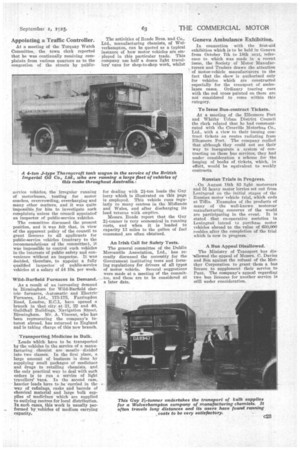Transporting Medicine in Bulk.
Page 7

If you've noticed an error in this article please click here to report it so we can fix it.
Loads which have to be transported by the vehicles in the service of a manufacturing chemist are mostly divided into two classes. In the first place, a large amount of business is done by supplying small packages of medicines and drugs to retailing chemists, and the only practical way to deal with such orders is to run a service of light travellers' vans. In the second case, heavier loads have to be carried in the r. way of refinings, casks and barrels of chemical material and large bulk supplies of medicines which are supplied to outlying centres for local distribution. In such cases, this work is usually performed by vehicles of medium carrying capacity.
The activities of Reade Bros. and Co„ Ltd., manufacturing chemists, of Wolverhampton, can be quoted as a typical instance of how motor vehicles arc employed in this particular trade. This company use half a dozen light travellers' vans for shop-to-shop work, whilst for dealing with 21-ton loads the Guy lorry which is illustrated on this page is employed. This vehicle runs regularly to many centres in the Midlands and Wales, and after discharging its load returns with empties.
Messrs. Ronde report that the Guy 21-tonner is very economical in running costs, and when it is loaded to capacity 13 miles to the gallon of fuel consumed are often obtained.




























